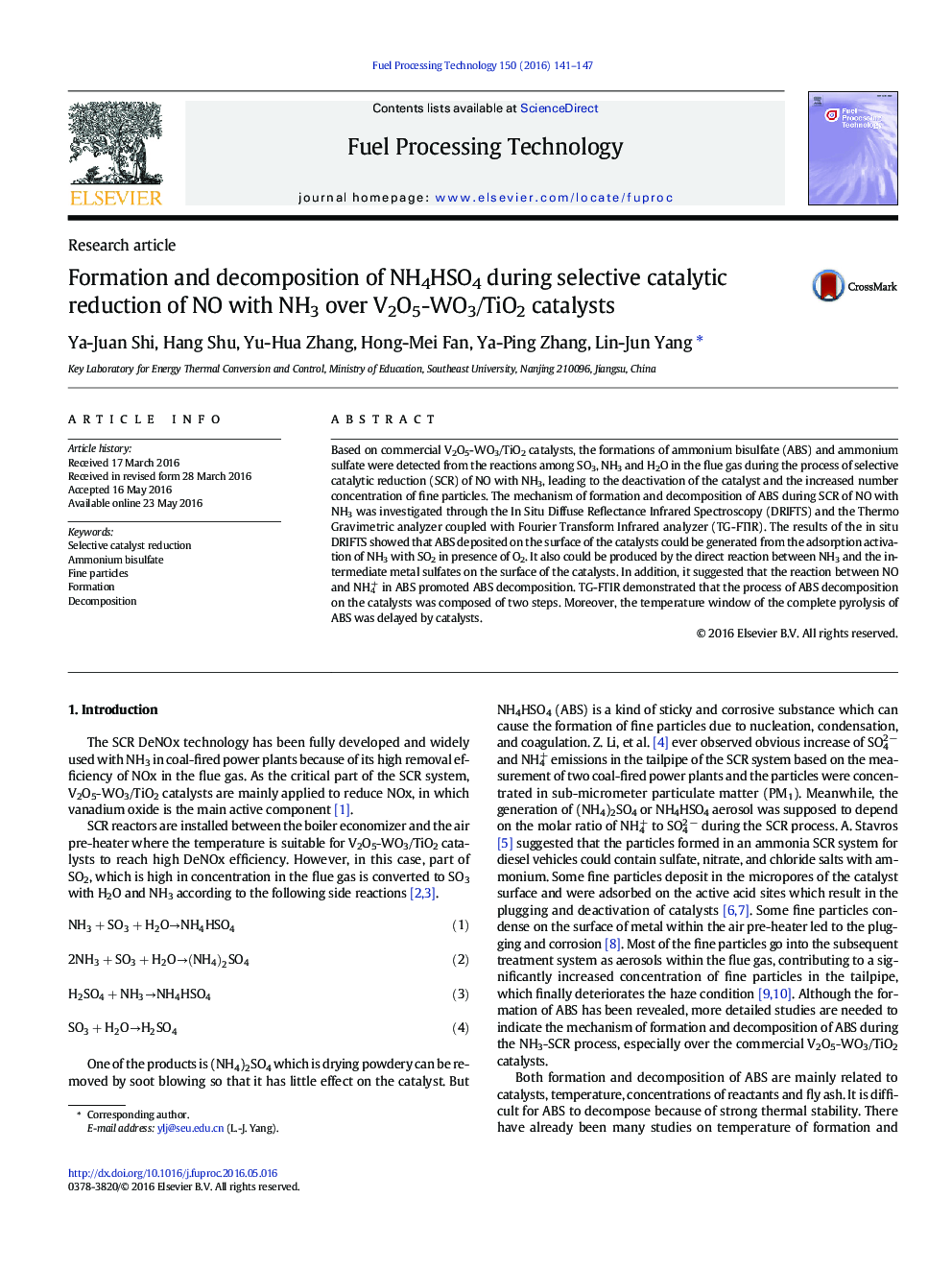| کد مقاله | کد نشریه | سال انتشار | مقاله انگلیسی | نسخه تمام متن |
|---|---|---|---|---|
| 209127 | 461655 | 2016 | 7 صفحه PDF | دانلود رایگان |

• There were two typical ways of NH4HSO4 generation during SCR DeNOx process.
• NO could react with NH4+, promoting decomposition of NH4HSO4 on the catalyst.
• The presence of the catalysts postponed the release of SO2 from NH4HSO4.
Based on commercial V2O5-WO3/TiO2 catalysts, the formations of ammonium bisulfate (ABS) and ammonium sulfate were detected from the reactions among SO3, NH3 and H2O in the flue gas during the process of selective catalytic reduction (SCR) of NO with NH3, leading to the deactivation of the catalyst and the increased number concentration of fine particles. The mechanism of formation and decomposition of ABS during SCR of NO with NH3 was investigated through the In Situ Diffuse Reflectance Infrared Spectroscopy (DRIFTS) and the Thermo Gravimetric analyzer coupled with Fourier Transform Infrared analyzer (TG-FTIR). The results of the in situ DRIFTS showed that ABS deposited on the surface of the catalysts could be generated from the adsorption activation of NH3 with SO2 in presence of O2. It also could be produced by the direct reaction between NH3 and the intermediate metal sulfates on the surface of the catalysts. In addition, it suggested that the reaction between NO and NH4+ in ABS promoted ABS decomposition. TG-FTIR demonstrated that the process of ABS decomposition on the catalysts was composed of two steps. Moreover, the temperature window of the complete pyrolysis of ABS was delayed by catalysts.
Journal: Fuel Processing Technology - Volume 150, September 2016, Pages 141–147